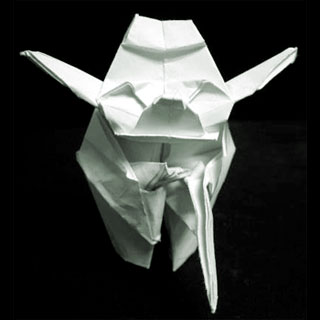
The word “experience” comes from the Latin word “experÄ«rÄ«”, or to try.
It’s strange, then, that in modern English the two words, “experience” and “try”, have such different meanings: when we try something we tend to take a sip or a nibble, get our toes wet, or go for a test drive around the block. But when we experience something, we allow it to overtake and engulf us, we admit it fully into our spaces, our lives. A deeper and more lasting understanding is achieved, something fundamentally different than what we get from merely trying something.
The purpose of user experience design, or UXD, is to understand that user behavior can be seen as part of a holistic experiential model instead of as a shallow, temporary hit-and-run encounter. In the domain of user experience, then, we must not mistake trying something for experiencing it.
The most revolutionary products, the things you “never knew you wanted but can’t live without”, only catch on when people are able to move quickly from trying to experiencing.
Some of the ramifications of this distinction include:
Product Reviewing: When testing a new product to see what it’s all about, consider adopting it thoroughly instead of just tinkering around with it. As you explore the product, ask yourself if you are using it like someone who actually bought it with the intention of using it, or if you are merely sweeping through it for a quick overview. At a wine tasting you aren’t supposed to swallow the stuff, but sometimes if you want to understand what it’s really all about you simply have to drink the Kool Aid.
Restaurant reviewers will visit the same establishment five or six times, on different days of the week and at different times of the day. When exploring a new product, consider taking the same approach — how differently would you use it on a busy day versus a slow day, at home versus at work, in a good mood or in a bad mood?
Trying new Social Apps: This is particularly important with social apps, where this phenomenon is exponentially true. You cannot experience a social app unless you are part of a group of people who are all experiencing it together. You cannot, for example, understand what Twitter really is until 20+ people (people who you actually care about) are connected to you as friends and all 20+ of you are using Twitter in your own idiosyncratic ways. A social networking app does not even really exist until there are groups of users trying it out.
Usability Testing: The purpose of usability testing is to simulate the planned user experience as closely as possible. By being conscious of the fact that some experiences involve long commitments and/or large numbers of participants, a usability test may need to be structured very differently than they are today. A prototype for testing may need to be pre-populated with legacy cruft and clutter, as if the test subject had been using it for years. And again, for social apps, this is even more pronounced: Public Betas are, in fact, the best way we currently have to test social apps, but maybe someone will devise a way of simulating the cruft and clutter by simulating real people in a network where few real people actually exist.
Product (or Website!) Design: Allow your users to rapidly transition from trying your product to experiencing it, by making the initial stages of the interaction with the product as seductive and addictive as possible. Apple’s “out of the box” seduction is the gold standard for this, but the tradition goes back to the simpler arts: James Bond movies always open with a high-voltage action sequence. And the most basic rule of journalism is to catch the reader’s attention in the first paragraph.
In Dont Make Me Think, Steve Krug posits that the first question a web site should answer for a user is “what is this?” It’s surprising how many sites fail utterly at this. If your web page cannot tell a user immediately what the hell it is, why it’s useful, etc., you’re already putting up a major obstacle between trying and experiencing. Krug’s book, in fact, can easily be seen as a concise manual on how to smooth the path from try to experience.
Comments
3 responses to “Experience or Don’t Experience. There is no Try.”
This is the new hot spot in my daily routine.
just to drop and say thanks alot for the really insightful articles (ever since my first one from you on class)
i encountered plenty of ‘trying’ than ‘experiencing’ in my line of work and it gets frustrating when a design is not put through the process properly and instead being nitpick by touch-and-go tryers(?)
That’s because we focus too much on “try” as “attempt” or even “sample” — as in, experience it *just a little, thank you.*
As cheesy as it is to quote anime, it does remind of one of my favorite Shirow-Oshii exchanges:
“What guarantee is there that l’ll remain ‘me?’”
“None. But to be human is to continually change. Your desire to remain as you are is what ultimately limits you.”
To try without experiencing, is to sample without proper context or without opportunity for change. And that’s not trying at all.